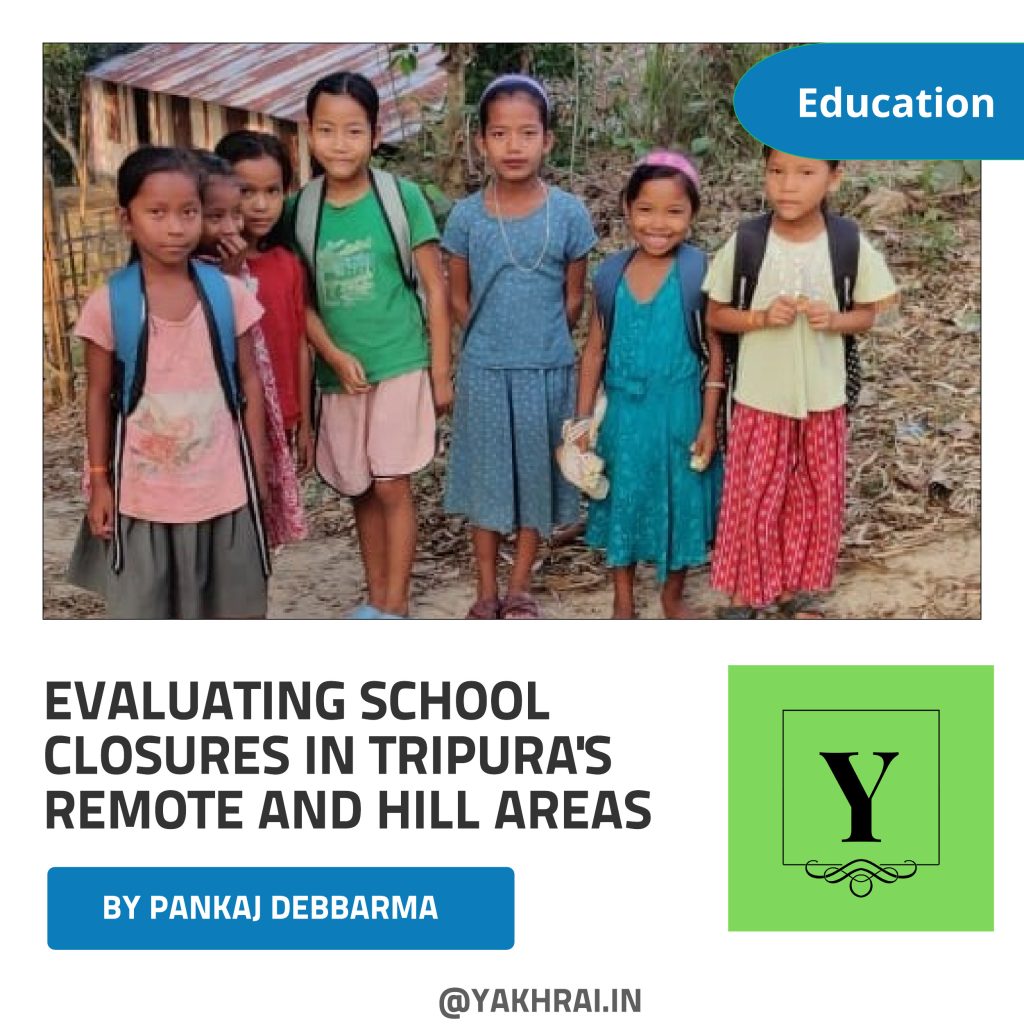By Pankaj Debbarma
July 9, 2024
The recent decision by the Tripura government to consolidate schools with fewer than 50 students’ enrolment into nearby institutions has sparked debate and concern although not of the magnitude that it deserves. While the stated aims are to optimize resources and improve the student-teacher ratio, the policy raises critical questions about its potential impact on access to education, particularly for the Tipra communities residing in the state’s remote hilly areas predominantly in Tripura Tribal Areas Autonomous District Council (TTAADC).
The Right to Education (RTE) Act, 2009, mandates free and compulsory education for children aged 6 to 14 years across India, ensuring that every child has access to a nearby school within a reasonable distance. This distance is typically defined as one kilometre for primary schools and three kilometers for upper primary schools in rural areas. These provisions aim to eliminate barriers to education, which are particularly crucial for children from marginalized backgrounds who may face socio-economic challenges hindering their access to education.
In Tripura, a significant portion of the population in the remote and hilly regions comprises indigenous Tipra communities. For many children in these areas, local schools with low enrolment are often the only accessible educational institutions within a manageable distance. Closing such schools could force children to travel long distances over challenging terrain, often without reliable transportation options. This logistical challenge not only increases the risk of student dropouts but also undermines the educational continuity and quality for these communities.
A blanket approach to school closures fails to consider the diverse geographic and demographic realities of Tripura. Each school closure requires a meticulous case-by-case evaluation, taking into account factors such as the actual distance to the nearest alternative school, availability and reliability of transportation, and the socio-economic background of the students. In instances where the nearest viable alternative school exceeds prescribed distance norms, maintaining smaller schools becomes imperative to uphold accessible education for all children, especially those in remote areas.
Moreover, the broader implications of school closures extend beyond logistical challenges. They disproportionately affect economically disadvantaged students, who may lack the resources to access distant schools or be compelled into private institutions they cannot afford. This not only exacerbates educational inequalities but also undermines the inclusive spirit of the RTE Act, which aims to ensure that every child, regardless of background, has equal access to quality education.
While optimizing educational resources in Tripura is a valid objective, the approach to school closures must prioritize the principles of the RTE Act and consider the unique needs of remote and rural communities, particularly the indigenous Tipra communities in hilly TTAADC areas. A nuanced, case-by-case assessment is crucial to mitigate adverse impacts on access to education for these marginalized groups. By adopting such an approach, the government can uphold its commitment to ensuring that all children, regardless of their geographic location or socio-economic status, have equal opportunities to receive quality education.

Fantastic beat I would like to apprentice while you amend your web site how could i subscribe for a blog site The account helped me a acceptable deal I had been a little bit acquainted of this your broadcast offered bright clear concept
My brother recommended I might like this web site He was totally right This post actually made my day You cannt imagine just how much time I had spent for this information Thanks